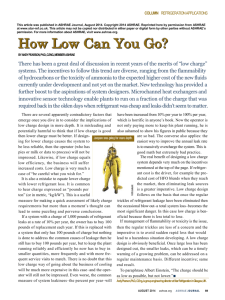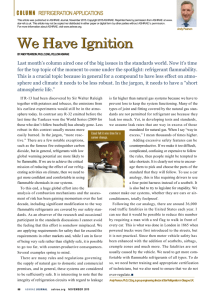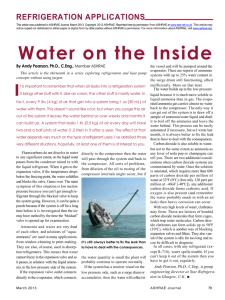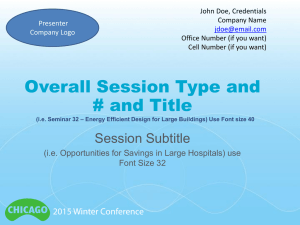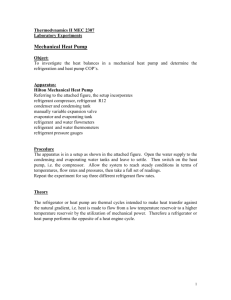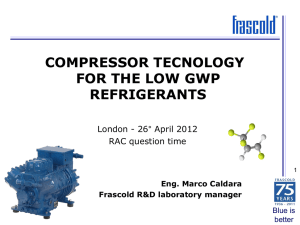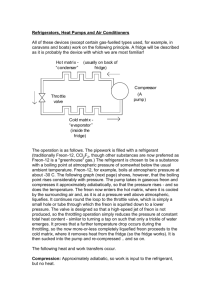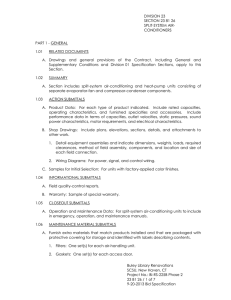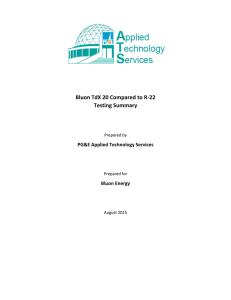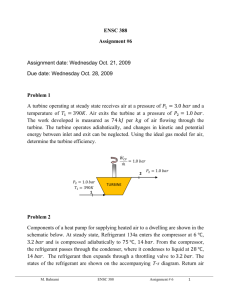Andy Pearson, Ph.D., C.Eng., is group engineering director at Star
advertisement
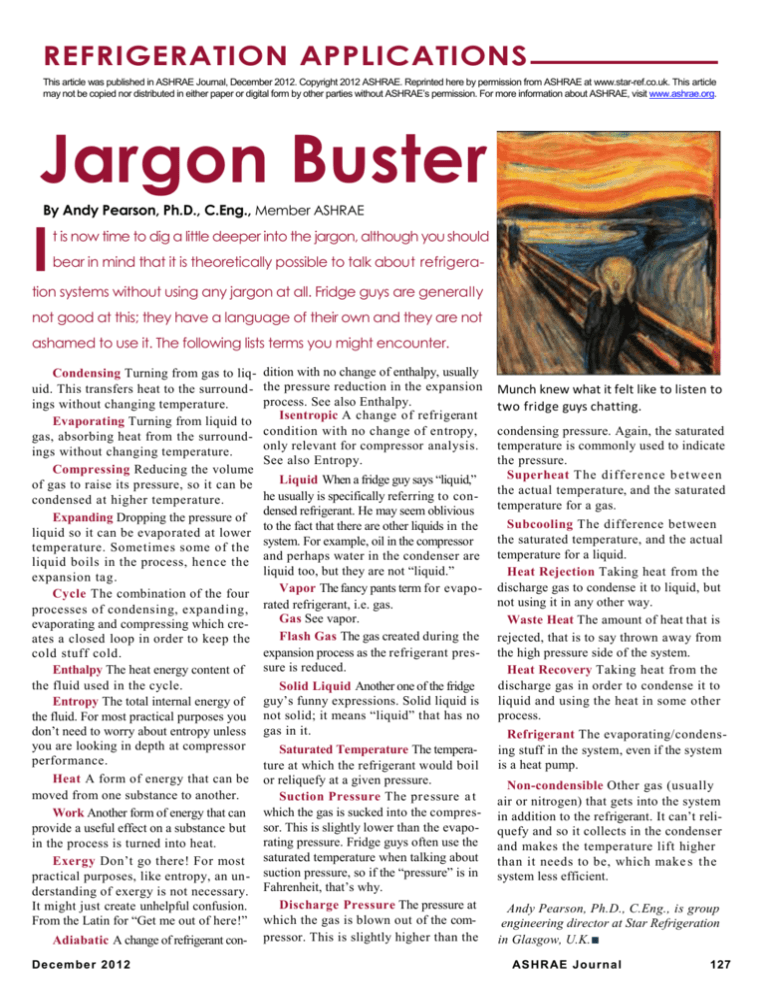
REFRIGERATION APPLICATIONS This article was published in ASHRAE Journal, December 2012. Copyright 2012 ASHRAE. Reprinted here by permission from ASHRAE at www.star-ref.co.uk. This article may not be copied nor distributed in either paper or digital form by other parties without ASHRAE’s permission. For more information about ASHRAE, visit www.ashrae.org. Jargon Buster By Andy Pearson, Ph.D., C.Eng., Member ASHRAE I t is now time to dig a little deeper into the jargon, although you should bear in mind that it is theoretically possible to talk about refrigera- tion systems without using any jargon at all. Fridge guys are generally not good at this; they have a language of their own and they are not ashamed to use it. The following lists terms you might encounter. Condensing Turning from gas to liquid. This transfers heat to the surroundings without changing temperature. Evaporating Turning from liquid to gas, absorbing heat from the surroundings without changing temperature. Compressing Reducing the volume of gas to raise its pressure, so it can be condensed at higher temperature. Expanding Dropping the pressure of liquid so it can be evaporated at lower temperature. Sometimes some of the liquid boils in the process, hence the expansion tag. Cycle The combination of the four processes of condensing, expanding, evaporating and compressing which creates a closed loop in order to keep the cold stuff cold. Enthalpy The heat energy content of the fluid used in the cycle. Entropy The total internal energy of the fluid. For most practical purposes you don’t need to worry about entropy unless you are looking in depth at compressor performance. Heat A form of energy that can be moved from one substance to another. Work Another form of energy that can provide a useful effect on a substance but in the process is turned into heat. Exergy Don’t go there! For most practical purposes, like entropy, an understanding of exergy is not necessary. It might just create unhelpful confusion. From the Latin for “Get me out of here!” Adiabatic A change of refrigerant conDecember 2012 dition with no change of enthalpy, usually the pressure reduction in the expansion process. See also Enthalpy. Isentropic A change of refrigerant condition with no change of entropy, only relevant for compressor analysis. See also Entropy. Liquid When a fridge guy says “liquid,” he usually is specifically referring to condensed refrigerant. He may seem oblivious to the fact that there are other liquids in the system. For example, oil in the compressor and perhaps water in the condenser are liquid too, but they are not “liquid.” Vapor The fancy pants term for evaporated refrigerant, i.e. gas. Gas See vapor. Flash Gas The gas created during the expansion process as the refrigerant pressure is reduced. Solid Liquid Another one of the fridge guy’s funny expressions. Solid liquid is not solid; it means “liquid” that has no gas in it. Saturated Temperature The temperature at which the refrigerant would boil or reliquefy at a given pressure. Suction Pressure The pressure a t which the gas is sucked into the compressor. This is slightly lower than the evaporating pressure. Fridge guys often use the saturated temperature when talking about suction pressure, so if the “pressure” is in Fahrenheit, that’s why. Discharge Pressure The pressure at which the gas is blown out of the compressor. This is slightly higher than the Munch knew what it felt like to listen to two fridge guys chatting. condensing pressure. Again, the saturated temperature is commonly used to indicate the pressure. Superheat The difference b et wee n the actual temperature, and the saturated temperature for a gas. Subcooling The difference between the saturated temperature, and the actual temperature for a liquid. Heat Rejection Taking heat from the discharge gas to condense it to liquid, but not using it in any other way. Waste Heat The amount of heat that is rejected, that is to say thrown away from the high pressure side of the system. Heat Recovery Taking heat from the discharge gas in order to condense it to liquid and using the heat in some other process. Refrigerant The evaporating/condensing stuff in the system, even if the system is a heat pump. Non-condensible Other gas (usually air or nitrogen) that gets into the system in addition to the refrigerant. It can’t reliquefy and so it collects in the condenser and makes the temperature lift higher than it needs to be, which make s the system less efficient. Andy Pearson, Ph.D., C.Eng., is group engineering director at Star Refrigeration in Glasgow, U.K. ■ AS HR AE Journal 127
